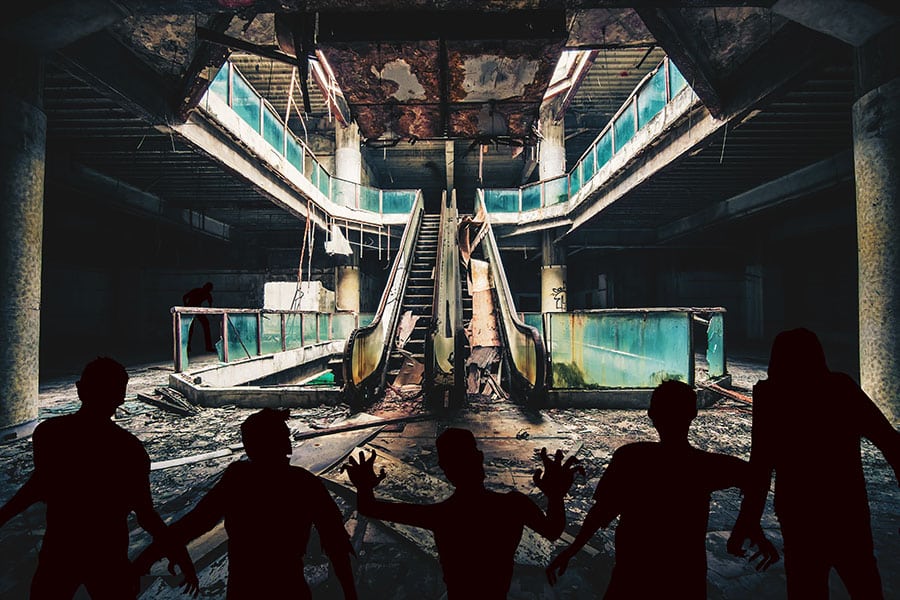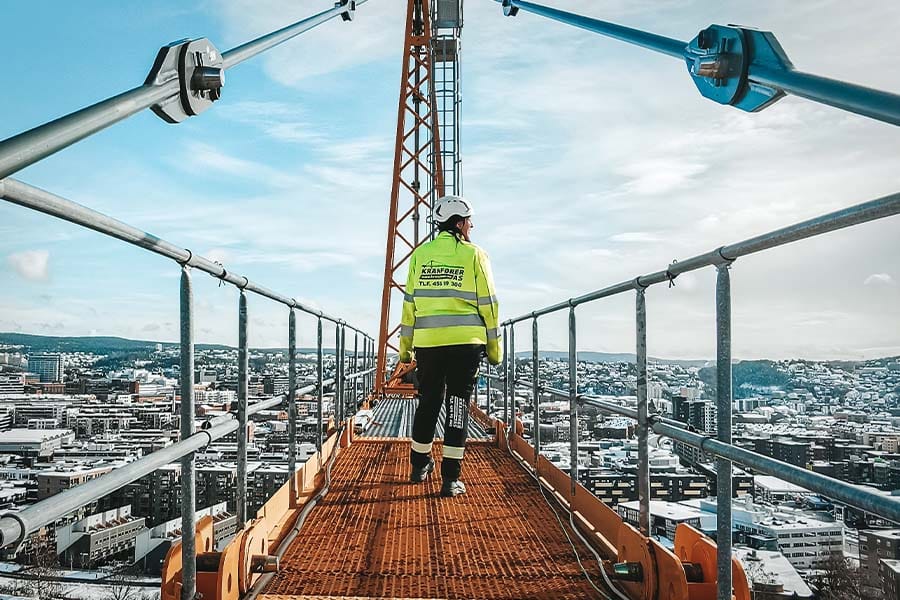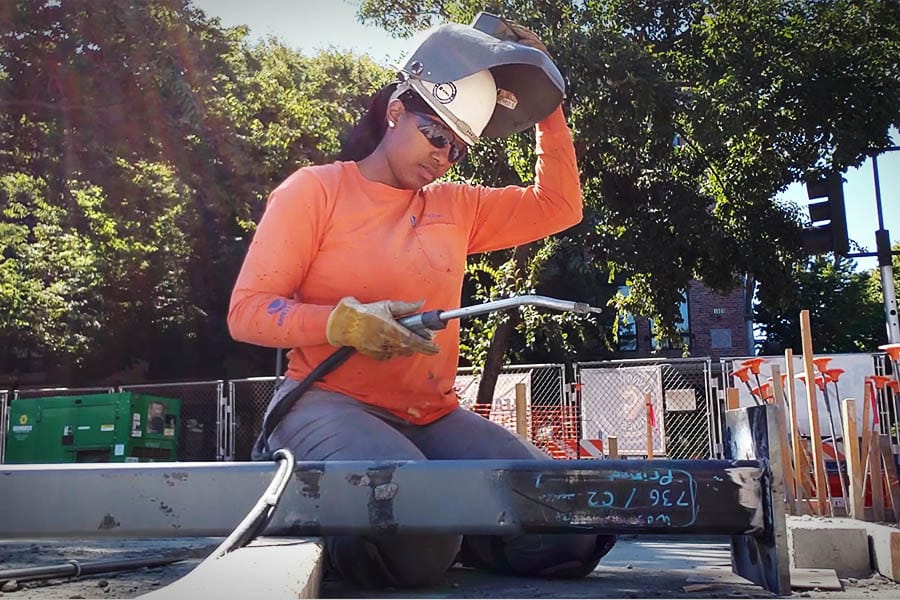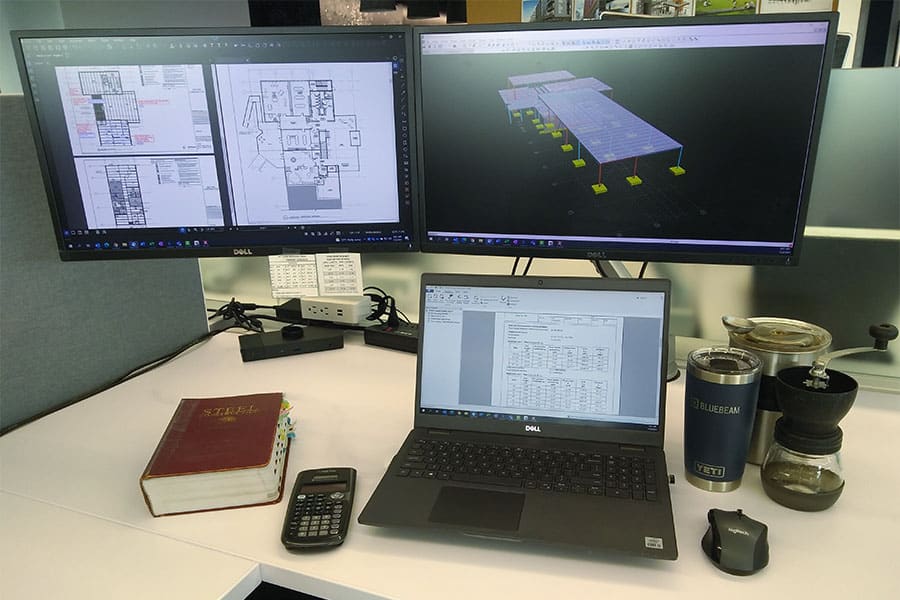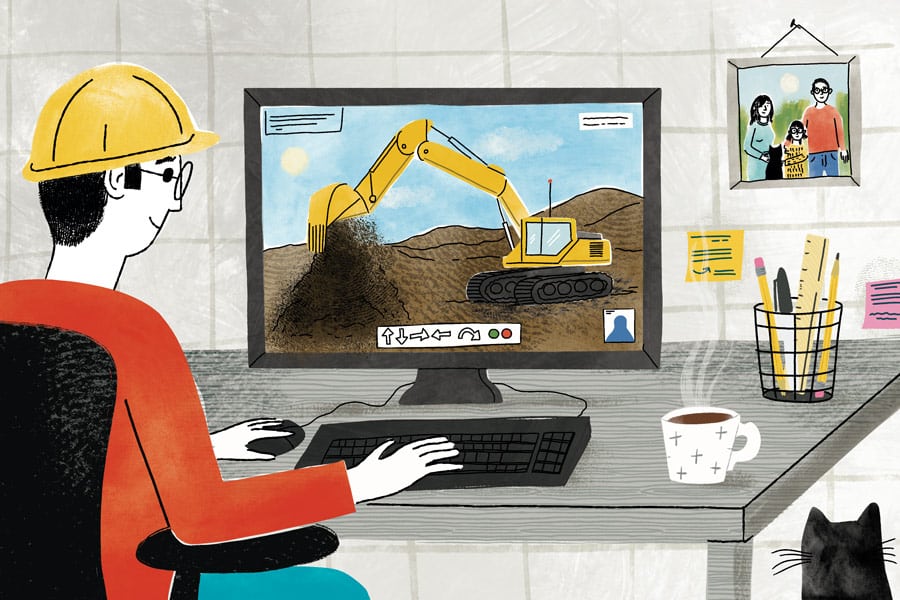Video Produced By Justin Hearn
Caroline Andrew wants to light up the world—literally.
As a professional lighting designer, Andrew’s job is to take the physical, tangible result of any construction project—a building or occupied space—and bring it to life through light.
“Lighting is what makes everything live together,” said Andrew, who makes her home in San Diego. “The wrong lighting, highlighting the wrong elements or using the wrong color temperature can completely change the perception of the space you have around you.”
From live entertainment to theme parks to museums and retail stores, Andrew has spent the majority of her young career manipulating the mood of built environments by carefully crafting lighting designs that add magnificent value to a space’s experience.
Just as a concert or museum exhibit can be brought to life with a deft touch of assured lighting movements or hues, so can a retail space or office, allowing its occupants to be more productive or likely to behave a certain way.
“If your lobby has a beautiful art wall and a fountain and plants, but it’s brightest over in that corner, it feels unbalanced,” Andrew said. “It really sets the mood, sets the tone and brings that environment into one place. Lighting is also, if you think about it, completely necessary. How many of us have walked into someplace and not known where we were supposed to go? Lighting is directional; it’s wayfinding.”
Moving off stage
Andrew didn’t always want to be the one shining light on others. Her journey to becoming a lighting designer started unofficially at age 4, when her mom enrolled her in musical theater, something Andrew quickly fell in love with and an art form she remains passionate about to this day.
But being on the stage under the bright lights eventually lost its luster. “As I got older, I wanted to be on stage less and less,” she said. “I wanted to focus more on how it’s made because I always found the process fascinating. Slowly, I went behind the scenes and became that tech kid that we all knew and loved in high school.”
Eventually, Andrew became interested in lighting specifically. This flourishing passion crystalized as a student at Pepperdine University in Malibu, California, where Andrew majored in theater production and design. Andrew said her love of light truly prospered at Pepperdine as she got deeper into the science and production behind the subject.
After graduating from college, Andrew went to work in lighting design at a venue in Orange County, California, called Soka University of America. She then resumed her education in the trade at San Diego State University.
After earning her Master of Fine Arts in lighting design in 2018, Andrew interned with Walt Disney Imagineering for a year, specializing in lighting controls. The experience helped launch a promising freelance career. Andrew has designed for a growing list of impressive venues in the entertainment industry, from Princess Cruises to the Los Angeles Opera to the world-famous Comic-Con convention in San Diego.
Andrew’s work and expertise in lighting doesn’t stop with entertainment spaces. In addition to taking on a growing cascade of work as a freelancer through her company Caroline Andrew Theatrical Design, she is also currently working as a design specialist for Pottery Barn, exemplifying that lighting theatrics can play a major role in the retail shopping experience as well.
Engineering the light
These days, Andrew is growing more focused on the engineering side of lighting design. Her days are loaded with coordinating and planning that makes her equal parts artist, engineer and document manager.
“Whether it’s a patio space or a theme park, we all have pieces that need to come together,” Andrew said. “I do a lot of paperwork. I work on a lot of engineering documents, double checking that fixtures will actually behave in the way they’re designed to. I do coordination with vendors, coordination with drafts people, coordination with contractors. I do a lot of question answering.”
Such a balancing act has come with a growing suite of tools. Lighting design requires such a mountain of hardware to get the job done, you’d think Andrew was a carpenter. “I can’t leave home without a wrench, ratchet set, screwdrivers, everything,” Andrew said. “I have cabinets full of gear, multiple climbing helmets and hard hats. You never know what you’re going to run into.”
Then there’s software. Vectorworks. Adobe Photoshop and Premiere. And, essentially, Bluebeam Revu, which Andrew said became an invaluable addition to her tech stack when she picked it up during a job early in her career.
“I started out marking up documents in Bluebeam and going through PDFs, highlighting what I needed to highlight, marking up, boxing out, fixing specifications—really simple stuff,” Andrew said. “Then I discovered that ETC, who creates most of the equipment that I do my controls with, has its own Tool Chest in Bluebeam. That was the moment that it became a lifesaving, essential tool, because I could start doing my one-line drawings in Bluebeam and be able to drop in the symbol.”
Andrew also uses Studio in Revu, the cloud-based collaboration and file storage capability. “Again, it’s lifesaving to be able to share a document and have everyone across seven different teams mark it up and then have a structured conversation about it over a video call,” she said.
Charging forward
Andrew’s passion for lighting is palpable. It comes through even in her at-home video chat set up—which is, unsurprisingly, perfectly lit to create a warm, intimate conversational experience.
This was, of course, intentional. “It was important to me, as a designer, to look like I had my stuff together when we all started using video calls suddenly at the start of the COVID-19 pandemic,” she said.
Andrew said she hopes more people will gravitate to her niche corner of the building and production industry in lighting design, and she encourages others to follow in her footsteps as a freelancer even though the career path isn’t always as predictable as others.
Reach out to lighting designers. Volunteer in production companies to learn the basics. Andrew said curating relationships early in her career is what ultimately led to where she is today—doing what she loves, bringing light to the world.
“Lighting is what brings all the pieces together into one world,” she said, later concluding: “Lighting is so much more than aesthetics. It’s world-building.”




